Nestled in the Andean highlands, on the shore of Lake Titicaca, is the city of Puno, which proudly holds the title of “Capital of Peruvian Folklore.” At an altitude of 3,827 masl and with a population of 130,000, Puno is a destination that attracts many to all that it offers. From vibrant dances and colorful costumes to ancient traditions that its people fervently celebrate.
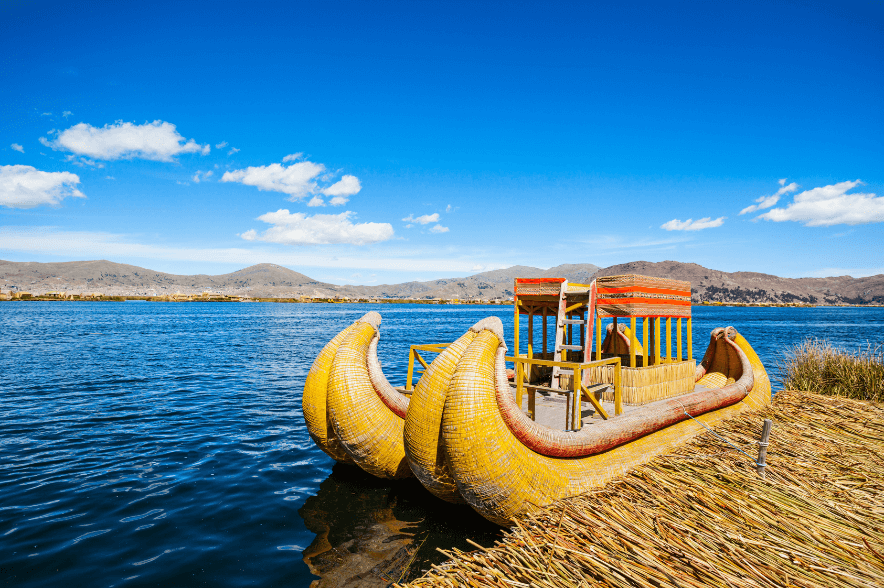
Foto 1: Titicaca Lake
Have you thought of exploring this lovely city? Join us as we fully convince you to take this journey.
Why is Puno considered the Capital of Peruvian Folklore?
Puno is the land of more than 300 dances that are highlighted by their costumes, choreography, music, and tradition which are each steeped in their own story. All of this led to the city’s recognition on November 7, 1985 as the Capital of Peruvian Folklore.
These dances are mostly performed at the different festivities celebrated in the city of Puno:
- The Feast of the Virgin of Candelaria (February 2)
- Carnival – Feast of Joy (Between February and March)
- Easter Week (Between March and April)
- Feast of the Alasitas (May 1)
- Feast of Santiago Apostol (July 25)
- Feast of All Saints and All Souls (November 1 and 2)
- Puno’s Anniversary (November 4)
Let’s take a deeper look into the iconic dances of the Department of Puno.
La Diablada
This is the main folk dance troupe and one of the most iconic that Puno has to offer. A popular legend linked to the worship of the Virgin of Candelaria says that, in 1675, some miners who were trapped in a mine shaft dreamt of the Virgin and prayed to her, and this led to a battle that represented the fight between good and evil.
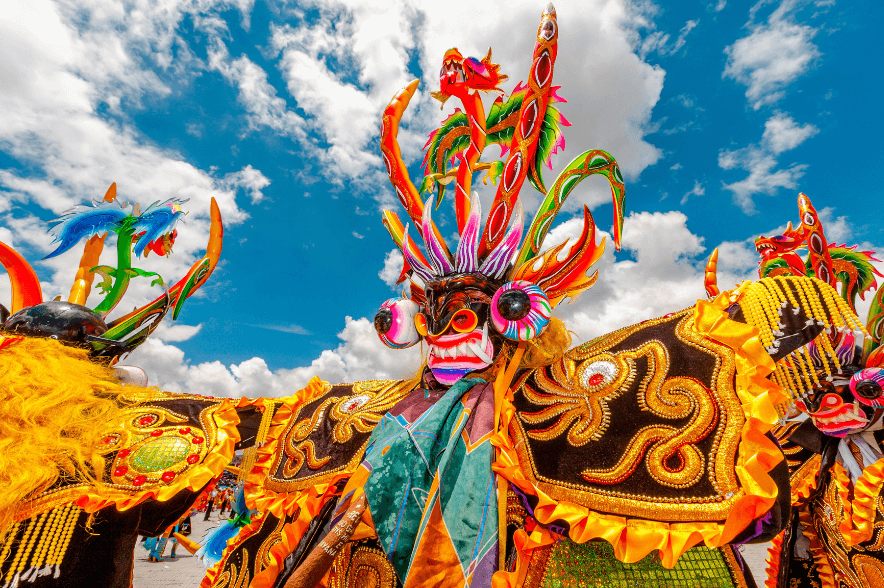
Foto 2: Diablada
However, recent studies take its origin further back to 1577, when the Jesuits settled in Juli, which today is the capital of the Province of Chucuito.
The dancers make their offerings to Pachamama to the tune of their panpipes, dressed in dazzling costumes and completely masked.
Sikuris
This dance originated on the Altiplano, the highland plateau, particularly because of their worship of mythical Andean beings such as the condor, the suri (the ostrich of the high Andes), the Pachamama (Mother Earth), the apus or mountaintops, the sun, and the moon.
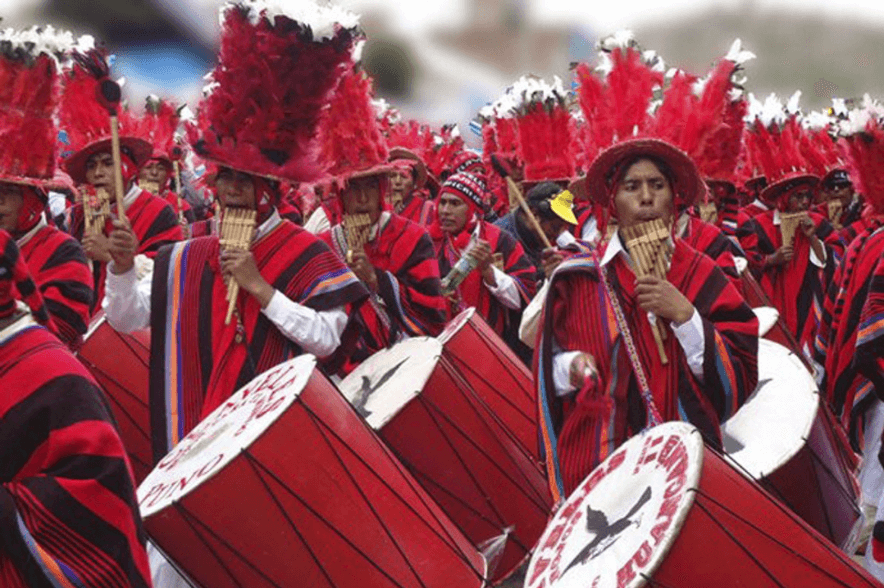
Foto 3: Sikuris
The dance carries a martial rhythm and expresses the deepest sentiments of the inhabitants of Puno. It features the panpipe (or siku), the wind instrument made of pipes of different diameters and lengths, and the drums that set the pace.
Pandilla Puneña
The Marinera and Pandilla Puneña is a hybrid that originated in Puno and is danced the length of the country. It is an unhurried but happy rhythm that expresses the elegance of the women of Puno and the gallantry of the men.
It begins as a marinera, with features similar to the different marinera dances in other regions and is then followed by a Huayno Pandillero or Pandilla. This Pandilla traces its origins to an urban setting in the city of Puno, created in a low social stratum known as “cholada” and then adjusted for a higher social status.
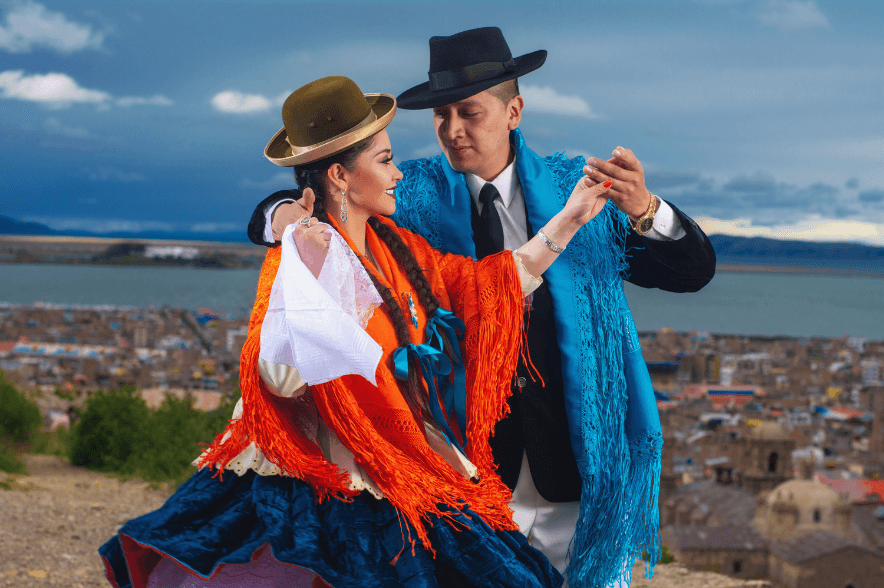
Foto 4: Pandilla Puneña and Huyano Pandillero
The women wear colorful and finely woven shawls and their traditional skirts or polleras. They also wear white blouses and bowler-type hats, with their hair tightly combed into two braids.
The men wear a jacket, white shirt and trousers and a Borsalino-type hat. Many of the clothes are a mix of black and white. They also wear a colorful shawl on their shoulders, which Puno men used to wear in days gone by.
Tundique, Tuntuna and Caporales
The Tundique dance is a reminder of how the black slaves lived during the Colonial period until they were freed. Its origin is a controversy between Peru and Bolivia. The dance is performed mainly by black dancers who play the different roles of slaves, a lawyer, a ranch formal and a female slave.
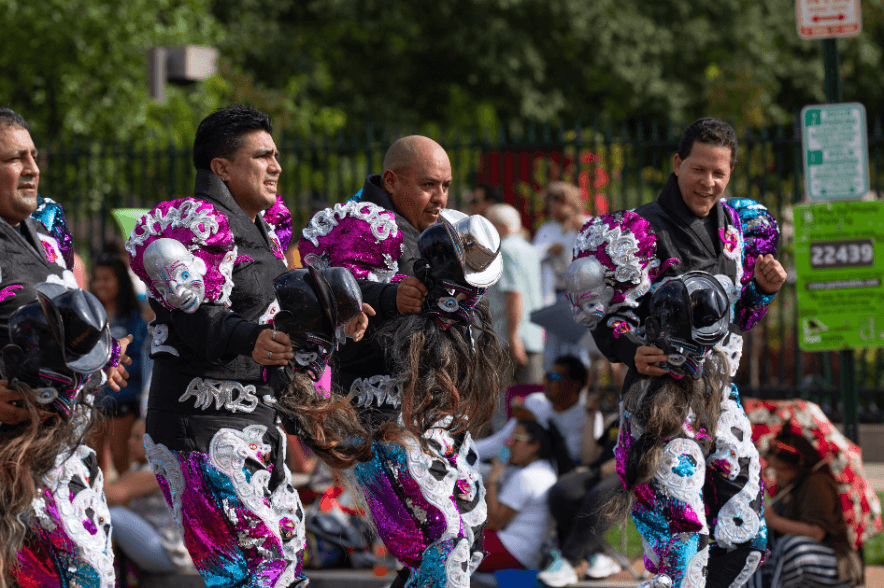
Foto 5: Tundique
The Tuntuna dance is an offshoot of the Tundique. It tells the story of how the black slaves were forced to work in the mines in the Altiplano. Their rhythms and dances were blended with the local dances, giving shape to a new way of expressing their dance.
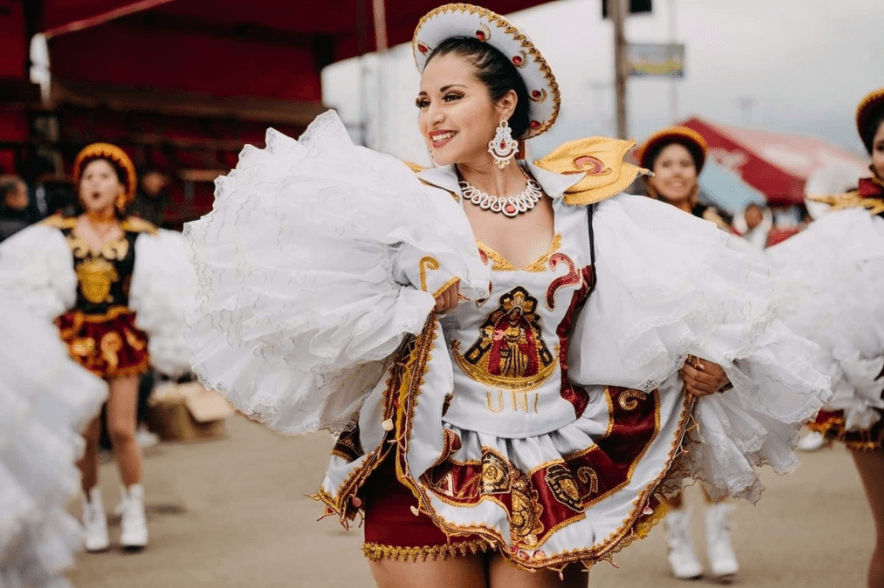
Foto 6: Tuntuna
The dance of the Caporales is an offshoot of the Tuntuna, taking on more colorful and dazzling costumes. The movements are more expressive and acrobatic.
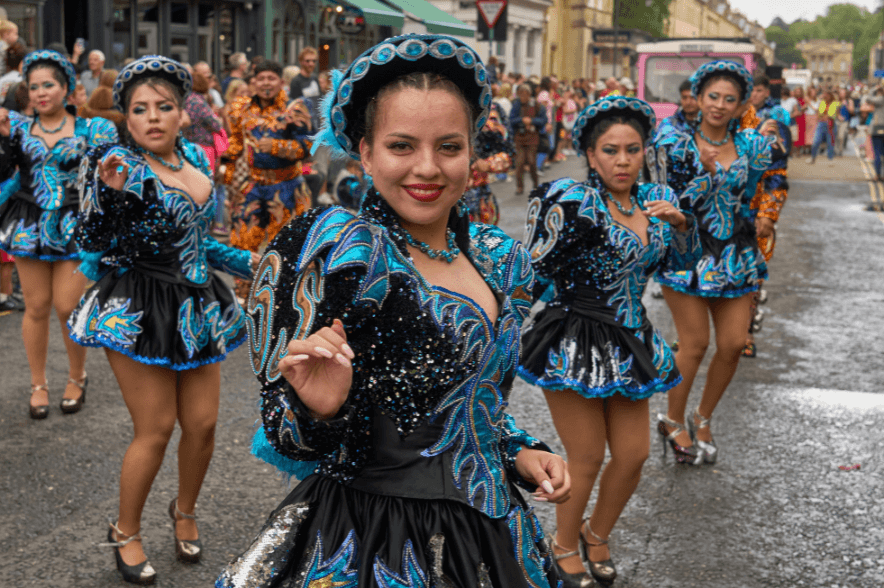
Foto 7: Caporales
Besides these already mentioned, there are also many more dances: the Wifala, Morenada, Tucumanos, Qhapu, Tita Titas, Papa Tarpuy, Kajchas, Casarasiri, etc.
Puno dances not only celebrate history and folklore but also invite us to join in a vibrant weaving of rhythm, color and meaning. With each step, gesture and costume, these dances capture the essence of the soul itself of the Andes, transporting us to a world of beauty connected to the place’s roots.
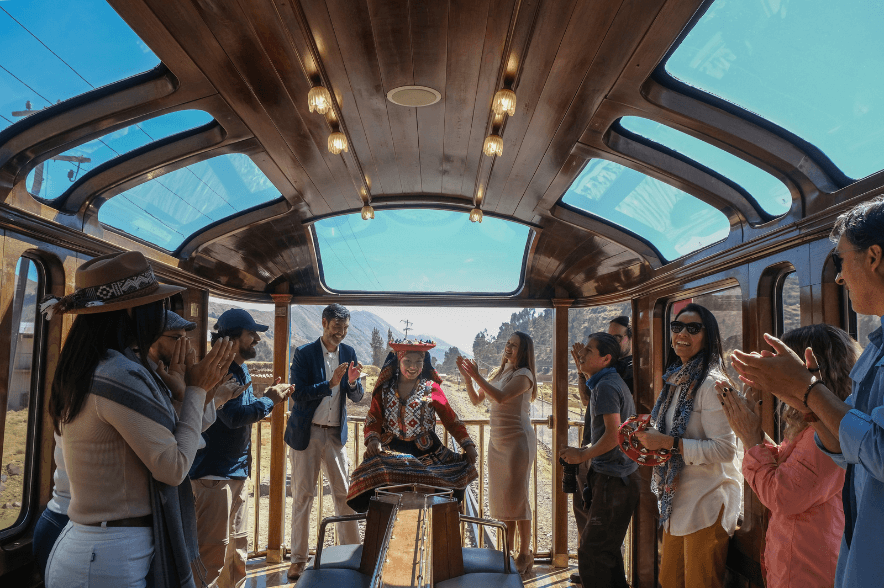
You can get to the city of Puno aboard our PeruRail Titicaca train, on which you can enjoy a luxurious experience you will always remember. Cross the Peruvian Andes to reach the shores of the mystical Lake Titicaca on a completely exclusive train on a route that has been prized for its beauty
This majestic experience includes a three-course gourmet lunch, a show and taste session of the famous Pisco Sour, live typical music and dances and, of course, one of the best views you can ever have of the Peruvian Andes. Get your tickets here!